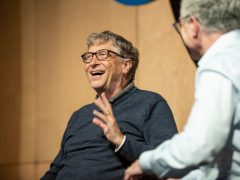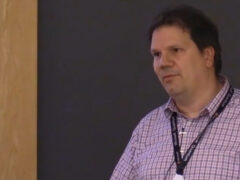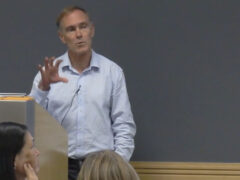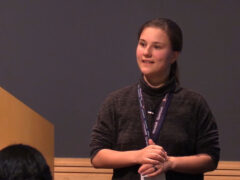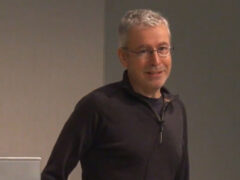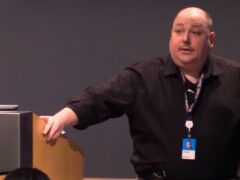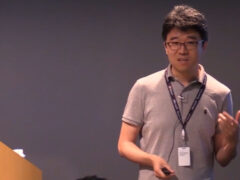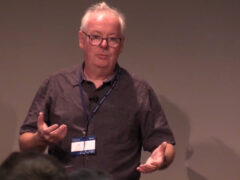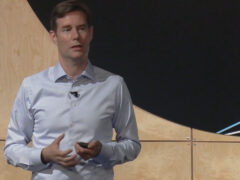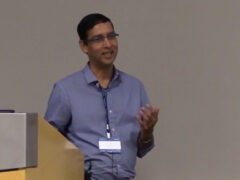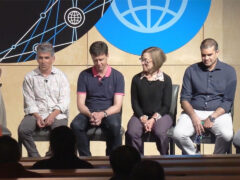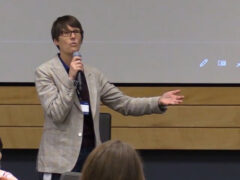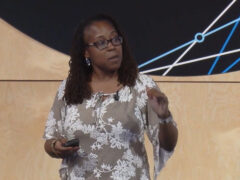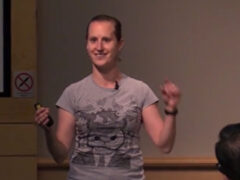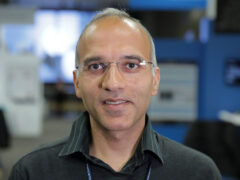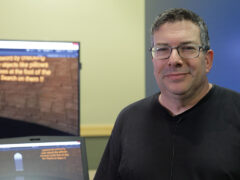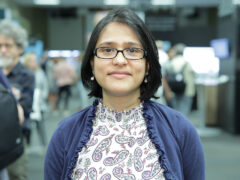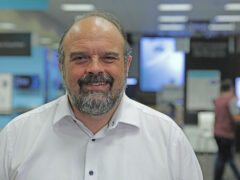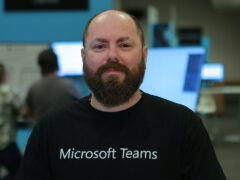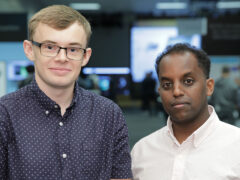Visual Motion and Structure
For several decades, the analysis of visual motion and 3-D scene structure have been central to the study of computer vision. Recent breakthroughs in analyzing and amplifying subtle motions can now give us insights into previously unstudied phenomena such as natural (visual) biometric signals and basic structure physics. Similarly, the ability to create detailed large-scale models either from photo collections found on the web or from cheap depth cameras (Kinect) opens up new applications in visualization and the exploration of 3-D locations.
The speakers in this session of the 2013 Microsoft Research Faculty Summit focus on recent technical breakthroughs, promising applications, and remaining challenges and opportunities in these areas.
发言人详细信息
Bill Freeman is a Professor of Computer Science at the Massachusetts Institute of Technology, having joined the faculty in 2001. His current research interests include machine learning applied to computer vision and graphics, and computational photography.
Dr. Freeman is active in the program and organizing committees of the major computer vision, graphics, and machine learning conferences. He was the program co-chair for the International Conference on Computer Vision (ICCV) in 2005, and will be the program co-chair for Computer Vision and Pattern Recognition (CVPR) in 2013.
From 1981 – 1987, he worked at Polaroid, developing image processing algorithms for electronic cameras and printers. In 1987-88, he was a Foreign Expert at the Taiyuan University of Technology , P. R. of China. From 1992 – 2001 he worked at Mitsubishi Electric Research Labs (MERL), in Cambridge, MA, as Sr. Research Scientist and Associate Director. He holds 30 patents and is an IEEE Fellow. A hobby is flying cameras in kites.
Andrew Blake received his Ph.D. from the University of Edinburgh in 1983. Until 1987 he was on the faculty of the department of Computer Science at the University of Edinburgh and a Royal Society Research Fellow. From 1987 to 1999, he has been on the faculty of the Department of Engineering Science in the University of Oxford, where he ran the Visual Dynamics Research Group, became a Professor in 1996, and and was a Royal Society Senior Research Fellow for 1998-9. In 1999 he moved to Microsoft Research Cambridge as Senior Researcher working in Machine Learning and Perception, while continuing to be associated with the University of Oxford as Visiting Professor of Engineering. He was elected a Fellow of the Royal Academy of Engineering in 1998.
Noah Snavely is an assistant professor of Computer Science at Cornell University, where he has been on the faculty since 2009. He received a B.S. in Computer Science and Mathematics from the University of Arizona in 2003, and a Ph.D. in Computer Science and Engineering from the University of Washington in 2008. Snavely works in computer graphics and computer vision, with a particular interest in using vast amounts of imagery from the Internet to reconstruct and visualize our world in 3-D, and in creating new tools for enabling people to capture and share their environments. His thesis work was the basis for Microsoft’s Photosynth, a tool for building 3-D visualizations from photo collections that has been used by many thousands of people. Snavely is the recipient of a Microsoft New Faculty Fellowship and an NSF CAREER Award, and has been recognized by Technology Review’s TR35.
- 日期:
- 演讲者:
- Andrew Blake, Bill Freeman, and Noah Snavely
- 所属机构:
- MIT Computer Science and Artificial Intelligence Lab (CSAIL), Microsoft Research, Cornell University
-
-

Andrew Blake
Emeritus Researcher
-
Jeff Running
-
-
系列: Microsoft Research Faculty Summit
-
-
Quantum Computing and Workforce, Curriculum, and Application Development: Case study
Speakers:- Krysta M. Svore,
- Martin Roetteler
-
-
-
-
Crowd, Cloud and the Future of Work: Updates from human AI computation
Speakers:- Besmira Nushi,
- Vani Mandava
-
-
-
-
-
Empowering People to Achieve More: How Useful a Concept is Productivity?
Speakers:- Brendan Murphy
-
-
Productivity in Software Development
Speakers:- Neel Sundaresan,
- Margaret-Anne Storey,
- Prem Kumar Devanbu
-
-
-
-
-
-
-
Accessible Virtual Reality
Speakers:- Eyal Ofek
-
Calendar.help: A Virtual Meeting Scheduling Assistant
Speakers:- Pamela Bhattacharya
-
Visual Studio IntelliCode
Speakers:- Mark Wilson-Thomas
-
Microsoft Teams: Collaborate with Any Researcher Anywhere
Speakers:- Jethro Seghers
-
Project Alava: Programming Webs of Microcontrollers
Speakers:- James Devine,
- Teddy Seyed
-
AI in PowerPoint
Speakers:- Kostas Seleskerov

